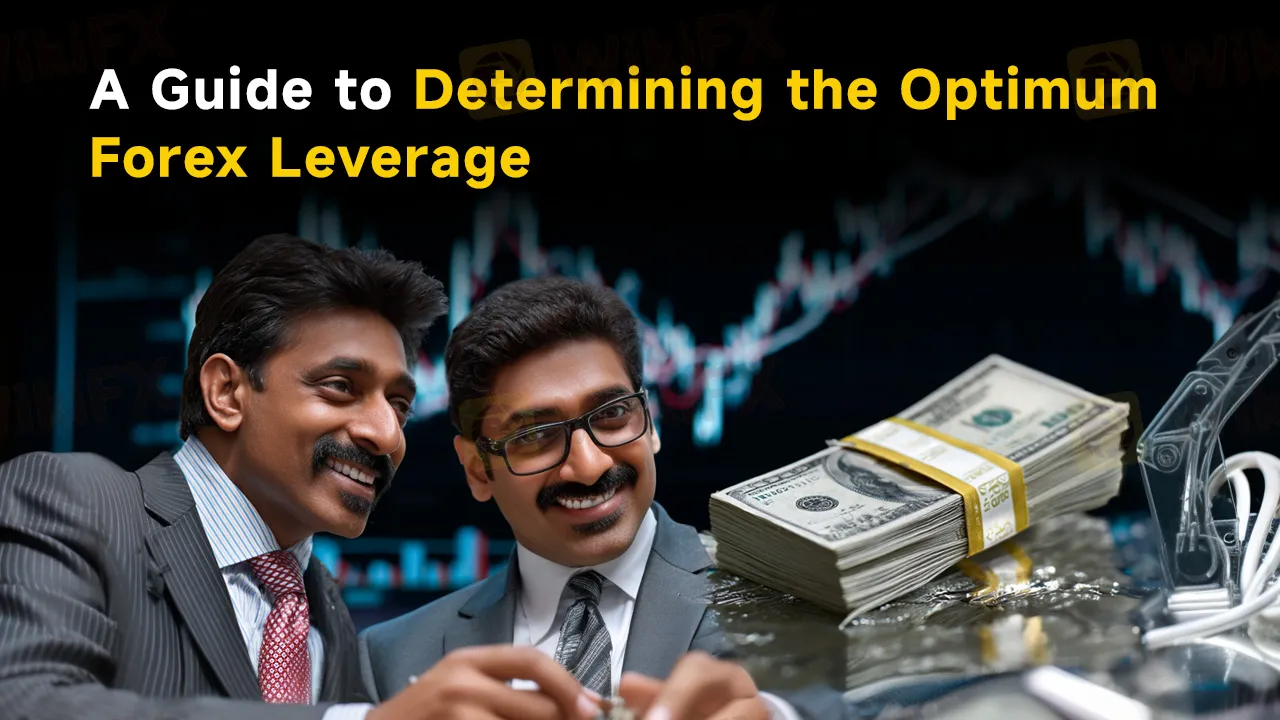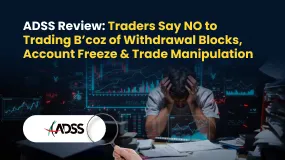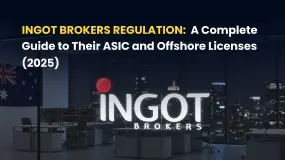简体中文
繁體中文
English
Pусский
日本語
ภาษาไทย
Tiếng Việt
Bahasa Indonesia
Español
हिन्दी
Filippiiniläinen
Français
Deutsch
Português
Türkçe
한국어
العربية
A Guide to Determining the Optimum Forex Leverage
Abstract:Want to gain a wider forex market position control by investing a minimal amount? Consider using leverage in forex. It implies using borrowed funds to raise your trading position more than your cash balance can let you do it. Forex traders usually employ leverage to churn out profits from relatively small currency pair price changes. However, there is a double-edged sword with leverage since it can multiply profits as well as losses. Therefore, using leverage in the right amount is key for traders. Forex market leverage can be 50:1 to 100:1 or more, which remains significantly greater than the 2: leverage usually offered in equities and 15:1 leverage in futures.

Want to gain a wider forex market position control by investing a minimal amount? Consider using leverage in forex. It implies using borrowed funds to raise your trading position more than your cash balance can let you do it. Forex traders usually employ leverage to churn out profits from relatively small currency pair price changes. However, there is a double-edged sword with leverage since it can multiply profits as well as losses. Therefore, using leverage in the right amount is key for traders. Forex market leverage can be 50:1 to 100:1 or more, which remains significantly greater than the 2: leverage usually offered in equities and 15:1 leverage in futures.
Elaborating on High Forex Leverage Risks
Leverage in forex is a process that allows traders to borrow from the broker. As forex traders borrow significant capital on initial margin requirements, they can benefit further from successful trades.
During earlier times, many brokers were able to use significantly higher leverage ratios of 400:1. This means that an initial deposit worth $250 was alone sufficient to gain control of the approximate currency price worth $100,000 in global forex markets. However, financial regulations, introduced in 2010, restricted brokers from keep the leverage limit to 50:1 (which is still a massive amount) to US-based traders. Even now, with a leverage of 50:1, traders can gain control worth $12,500 in currency with a deposit of $250. So, what should be the optimum leverage for traders - 5:1 or 50:1? Lets find out using the examples below.
Illustration of Maximum Leverage
Example - Richard has a trading account balance of $10.000 and decides to use the 50:1 leverage. This means that he can trade up to $500,000. In the forex terminology, this will be represented as five standard lots. There are three basic forex trade sizes - a standard lot representing 100,000 units of quote currency, a mini lot of 10,000 units of the base currency, and a micro lot of 100 units of quote currency. Currency movements are measured in pips, with each movement in a standard lot representing a change of 10 units.
Lets assume the trader bought five standard lots with the US dollar (quote currency). In that case, each pip movement will incur $50. Should the trade go against Richard by 50 pips, he would lose 50 pips x $50 = $2,500. This constitutes 25% of the overall trading account balance i.e. $10,000.
Illustration of Less Leverage
Now take the example of Grant, who instead of using leverage at 50:1, chooses 5:1. If Grant has a trading account worth $10,000, he can trade up to $50,000 in currency. This would mean a cost worth $10,000 for each mini lot, with each representing a $1 change. As Grant has 5 mini lots, each pip would lead to a $5 change.
Should the trade go against Grant by 50 pips, he would lose $250 (50 pips x $5). This accounts for a mere 2.5% of the overall position.
How to Determine the Optimum Forex Leverage?
It is expected that traders should review the market and their potential before choosing a leverage level. However, you can apply three easy rules to decide it.
- Maintain low leverage levels.
- Employ trailing stops to limit downside and conserve capital.
- Restrict capital to 1%-2% of the overall trading capital on every position.
Ideally, forex traders must choose the leverage level that ensures a greater degree of convenience. For conservative traders wishing to limit risks, they can opt for a 5:1 or 10:1 leverage. This leverage ratio even applies to those learning to trade currencies. Trailing or limit stops allow traders to cap their losses as a trade goes wrong. Using limit stops allows traders to continue learning to trade currencies and reduce potential losses in the event of a trade failure. These stops are crucial as they help curb the emotional aspect attached to trading and foster a practical trading environment for traders.
Summing Up
Determining the optimum forex leverage is about balancing opportunity and risk. While higher leverage can amplify potential gains, it can equally magnify losses and quickly deplete trading capital. The ideal leverage ratio varies by trader, depending on experience, capital size, and risk appetite. New and conservative traders should begin with low leverage (5:1 or 10:1), focusing on learning and capital preservation. Over time, as skill and confidence grow, leverage can be adjusted strategically. Remember, in forex trading, sustainability matters more than speed — its better to trade smart than to trade big.
To know more about leverage and other forex trading tools, join WikiFX Masterminds (ID:EODL15W5IH) today.
Follow these steps to get started -
1. Scan the QR code placed right at the bottom.
2. Download the WikiFX Pro app.
3. Afterward, tap the ‘Scan’ icon placed at the top right corner
4. Scan the code again.
5. Congratulations on joining the group.

Disclaimer:
The views in this article only represent the author's personal views, and do not constitute investment advice on this platform. This platform does not guarantee the accuracy, completeness and timeliness of the information in the article, and will not be liable for any loss caused by the use of or reliance on the information in the article.
Read more

Grand Capital Doesn’t Feel GRAND for Traders with Withdrawal Denials & Long Processing Times
The trading environment does not seem that rosy for traders at Grand Capital, a Seychelles-based forex broker. Traders’ requests for withdrawals are alleged to be in the review process for months, making them frustrated and helpless. Despite meeting the guidelines, traders find it hard to withdraw funds, as suggested by their complaints online. What’s also troubling traders are long processing times concerning Grand Capital withdrawals. In this Grand Capital review segment, we have shared some complaints for you to look at. Read on!

ADSS Review: Traders Say NO to Trading B’coz of Withdrawal Blocks, Account Freeze & Trade Issues
Does ADSS give you plenty of excuses to deny you access to withdrawals? Is your withdrawal request pending for months or years? Do you witness account freezes from the United Arab Emirates-based forex broker? Do you struggle to open and close your forex positions on the ADSS app? Does the customer support service fail to respond to your trading queries? All these issues have become a rage online. In this ADSS Broker review article, we have highlighted actual trader wordings on these issues. Keep reading!

INGOT Brokers Regulation 2025: ASIC vs Offshore License - What Traders Must Know
Explore INGOT Brokers regulation in 2025: Compare their ASIC and Seychelles FSA licenses, understand trader protection levels, and learn about potential risks in this detailed guide.

INGOT Brokers Review 2025: High Risk or Hidden Gem? Expert Analysis Reveals All
Comprehensive INGOT Brokers review exploring the broker's mixed reputation in 2025. Discover the truth about regulation, trading options, and user experiences before opening an account.
WikiFX Broker
Latest News
Consob Targets Political Deepfake “Clone Sites” and Unlicensed Platforms in Latest Enforcement Round
WikiEXPO Global Expert Interviews: Gustavo Antonio Montero: ESG in Finance
2 Malaysians Arrested in $1 Million Gold Scam Impersonating Singapore Officials
Is FXPesa Regulated? Real User Reviews & Regulation Check
Fraud Mastermind Zhimin Qian Sentenced to 11 Years for $6.6 Billion Bitcoin Ponzi Scheme
Almahfaza Broker – 2025 Review: Safe or Scam?
Uniglobe Markets Review 2025: A Complete Guide to an Unregulated Broker
INZO Broker No Deposit Bonus: A 2025 Deep Dive into Its Offers and Risks
Exness Broker Expands in South Africa with Cape Town Hub
Global Guide to Finding Forex IBs/Brokers — Share Your Pick and Win Big!
Currency Calculator



